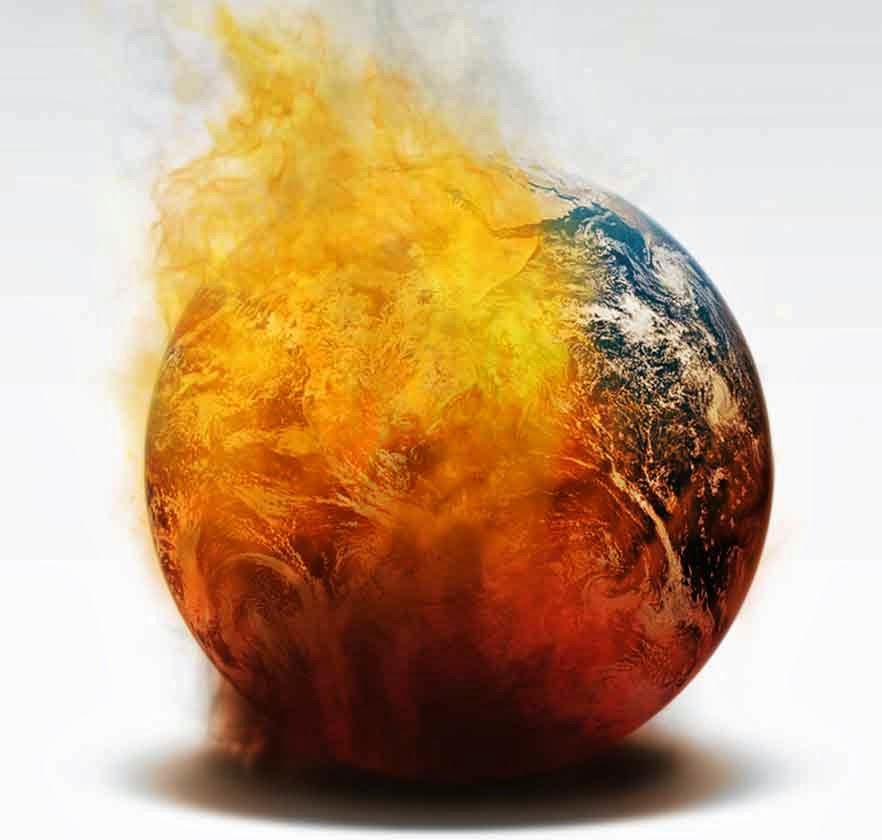Effects of Global warming
Global warming
Increasing global warming may not be a serious matter for
most, but it has the vast potential to change the face of the earth completely,
forever. The slogan ‘Save Earth’ or ‘Save Nature’ are very common these
days but these doesn’t arise a sense of responsibility among most people as
they simply walkout of the conversation by just saying “This is not my fight, I got a lot of other things to worry about”. Now
I would like to remind you that earth was formed billions of years ago
and since its formation, it has faced an unknown number of disasters and mass
extinctions, but nothing really happened to it. Every time when something bad
happened, some species that didn’t fit were wiped out, nature again played its
role and new species were evolved. Now it may be a reason to think that this
time it may be our species. So you should try to ‘Save Yourself’.
A small increase in few degree of temperature may not
offend us in personal, but if this increase is as alarming as today's, it will
have very serious effects on mass, which I would depict in the following
paragraphs.
Effects on Flora & Fauna
A little bit of increase in
temperature is good for flora and it increases productivity, but much of it is
too bad for most of species as they die of sunburn and dryness. For fauna, it
is mostly bad as it distorts their habitat and eating behavior. Due to high
temperature, decomposition is enhanced leading to release of methane in the
atmosphere, leading to further greenhouse effect. When the temperature is
significantly high, many species which are vulnerable to climate change will go
extinct, leading to further decomposition and further methane and other
greenhouse gases.
Effects on Climate
Volcanic eruptions and Earthquakes
When the global temperature is
high, the substances buried deep inside the earth starts changing state due to
immense pressure and temperature leading to a requirement of an outlet. This
causes an increase in the events of Volcanic Eruptions and Earthquakes all over
the world.
Uneven whether
When the climate loses its
balance, the temperature and pressure belts of all regions of the world show
changes in them, leading to unexpected and completely different types of winds
and cyclones. This leads to a formation of a completely different kind of
weather cycle. There are many examples of floods in deserts and dry lands and
draughts in regions of good annual rainfall or extremely high temperatures in
summers and extremely low temperatures in winters in the recent years. The
frequency of natural disasters like earthquake, tsunami, landslides, floods,
massive cyclones has also increased. This unpredicted weather also leads to
death of a large number of living organisms.
Floods
Since we have already talked
about floods due to rains, we would move forward to another level of tsunamis.
Everyone knows that glaciers around the world are melting at an alarming rate
due to global warming, there is going to be a day when all the ice on the
glaciers would end and all the water would be in the oceans. The first and the
foremost thing that would happen after this would be that oceans will rise up
to 1 meter and small countries in the oceans and islands would disappear from
the globe. Sea coasts around the continents would shrink and annual rivers
originating from glaciers would be dried. Apart from these, following the
further effects of this sustainable flood-
1.
The day would become longer than 24 hours
When all the ice would melt,
the whole mass of the water will be evenly distributed all over the world.
Which would increase the mass distribution and hence Moment of Inertia of the
Earth. Angular mechanics states that the angular momentum of any rotating body
remains constant if there is no external torque on it. Since Earth revolves
around its axis on its own in the absence of gravity, the angular momentum of
the Earth must remain constant in every condition.
Now,
L=I*ῳ
Where,
‘L’ is Angular Momentum
‘I’ is Moment of Inertia, and
‘ῳ’ is Angular Velocity
Since ‘L’ is constant,
1/I ∞ ῳ
Hence, if moment of inertia increases, the
angular velocity would reduce causing an increase in the day time.
This increase would have a very bad effect on
almost all the species of the Earth. The migrating animals and bird species
would confuse with seasons and hence most will die making wrong decisions. The
body cycle of all the living organisms would change and lead to many new
diseases.
2. Failure
of Ocean Conveyor Belt
With all the other glaciers,
Green Land would also lose all its ice. Due to this there would be no disposal
of ice in the sea and the downward flow of cold water wouldn’t start. Due to
this, the Great Ocean Conveyor Belt would breakdown. Due to this the hot and
cold water would not be circulated all over the world and the temperatures of
the whole world would not be regulated. Above the surface of water, it would
another ice age in the areas near poles and the temperatures near equatorial
region would be unbearable for any species to survive. This large difference in
temperature would also cause massive cyclones. The same thing would also happen
inside underwater and most of the oceanic species of animals and corals will
die. When the dead corals and aquatic animals would oxidize by using the
dissolved oxygen and decompose. It would release organic substances in large
quantity and methane would be mixed in the water in large quantity. It would
also finish the oceans capacity to produce oxygen and absorb carbon die oxide
from the atmosphere by killing all the living organisms inside the ocean
including sea plants and all the corals. All these effects would together
finish most of the life on earth.
Credits: Image Source- Google Images





.jpg)
Comments
Post a Comment